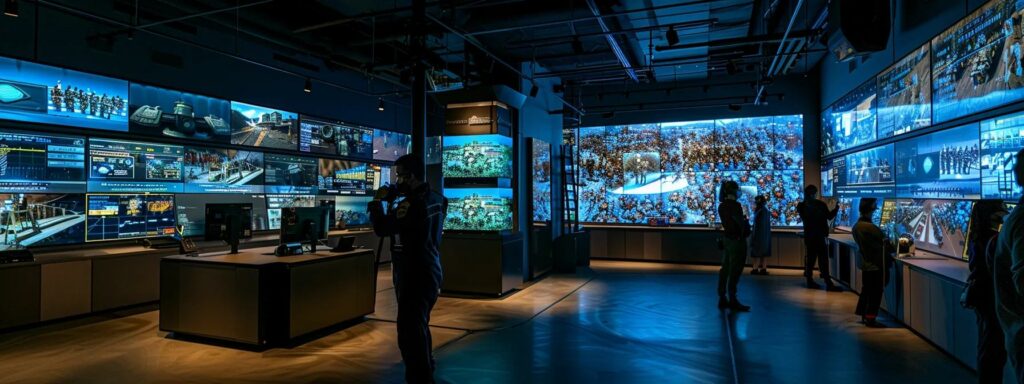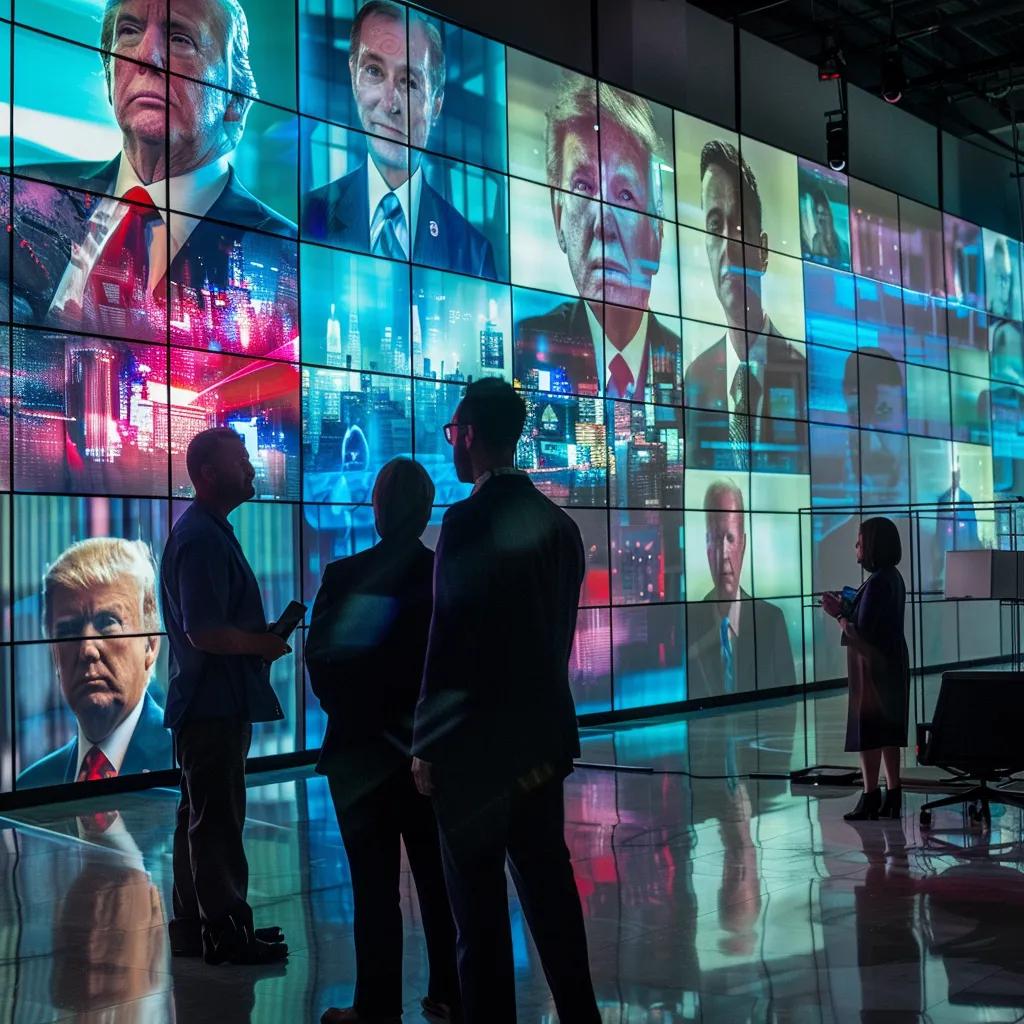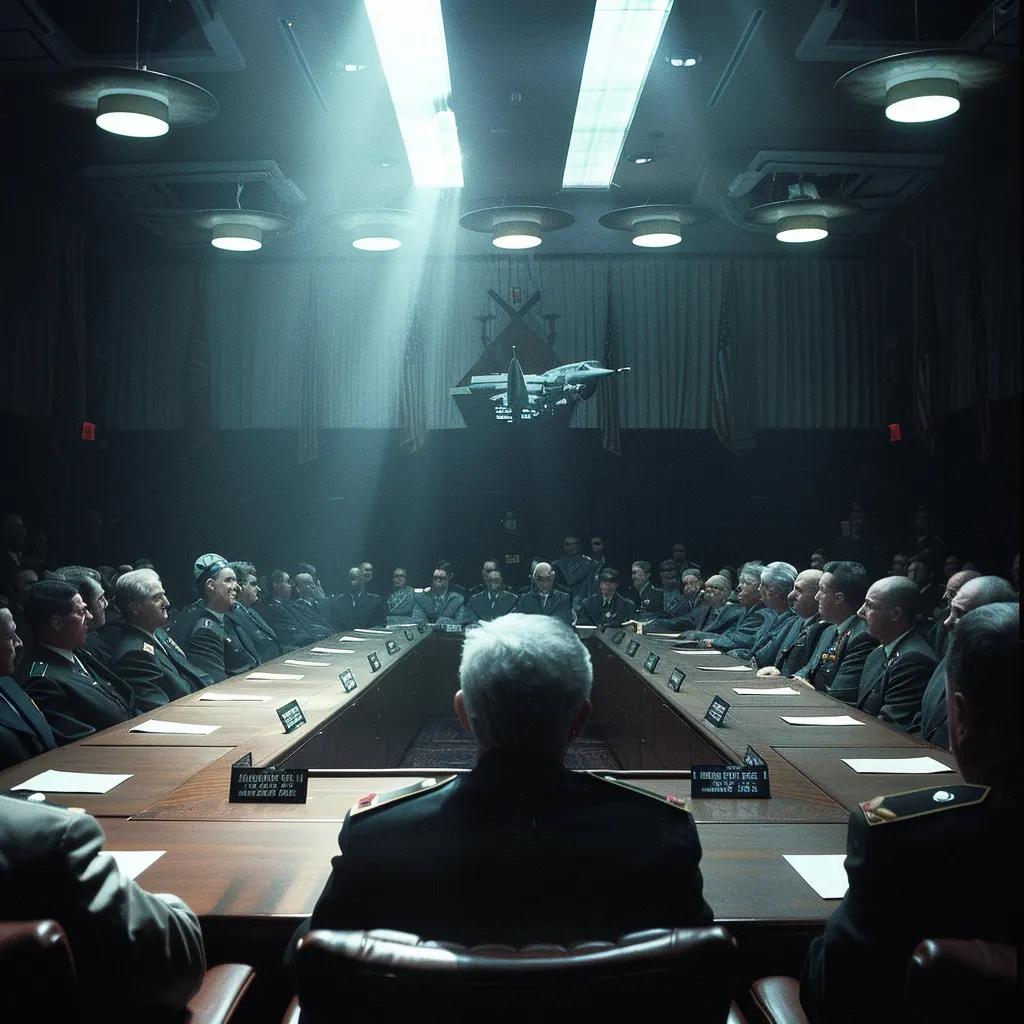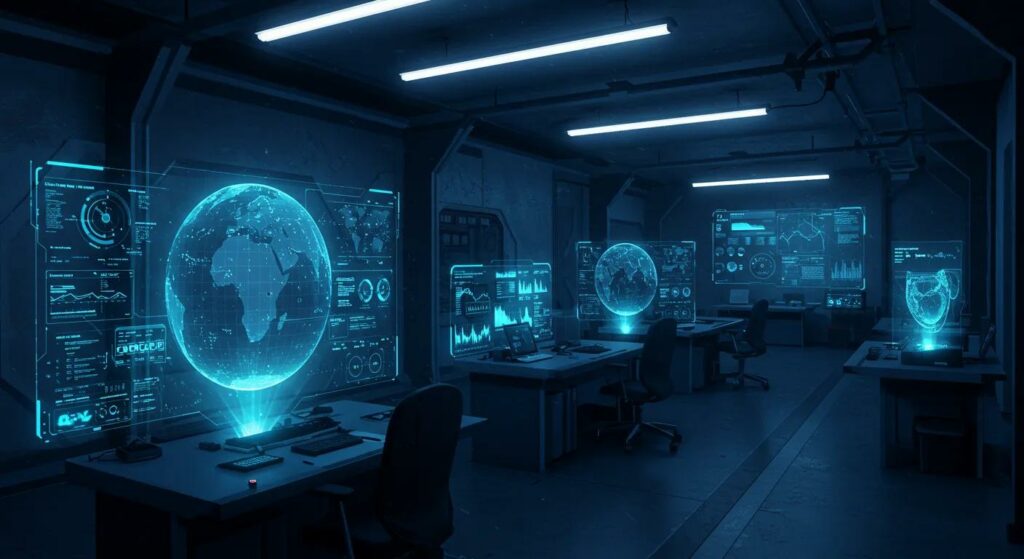
Table Of Contents:
- Deepfakes in War: The Next Frontier of Psychological Operations
- Defining Deepfake Technology and Its Role in Modern Warfare
- Deepfakes as a Potent Tool for Psychological Operations
- The Mechanics of Deepfake Warfare and AI Misinformation Campaigns
- Assessing the Destabilizing Impact of Deepfakes on Warfare and Geopolitics
- Developing Countermeasures Against Deepfake Threats in Psychological Operations
- The Future Landscape of AI Misinformation and Deepfake Warfare
- Frequently Asked Questions
Deepfakes in War: The Next Frontier of Psychological Operations
Deepfakes have emerged as one of the most sophisticated technologies of our time, transforming how states, non-state actors, and military entities conduct psychological operations. In conflict, deepfakes—hyper-realistic, AI-generated synthetic media—can be weaponized to manipulate perceptions, destabilize adversaries, and influence public opinion. This article explores the evolution, technical mechanisms, and potential impact of deepfakes in modern warfare. It examines their role in psychological operations (PsyOps), details how adversaries harness AI-driven misinformation, and discusses countermeasures being developed to detect and mitigate these threats.
Our discussion begins with the definition and technical underpinnings of deepfake technology for military use. We then address the strategic use of deepfakes to influence behavior, examine how deepfake warfare is planned and executed, and assess both the geopolitical implications and challenges in detecting such media. Finally, we discuss countermeasures and look ahead to the future landscape of AI misinformation in armed conflict.
Defining Deepfake Technology and Its Role in Modern Warfare
Deepfake technology involves creating hyper-realistic synthetic media using artificial intelligence techniques, primarily generative adversarial networks (GANs). This process evolved from rudimentary video manipulations into sophisticated fabrications that are often indistinguishable from genuine content. In modern warfare, deepfakes serve as potent tools for propagating disinformation and executing psychological operations by blurring the line between fact and fiction.
The Evolution of AI-Generated Synthetic Media for Conflict
Initially, digital deception relied on simple video edits and doctored images. However, rapid advancements in machine learning now allow seamless imitation of human speech and facial expressions, enabling deepfakes that can fool even experts. Military and intelligence analyses have noted cases where deepfake videos produced false narratives to stir public sentiment and undermine strategic communications.
Improvements in resolution, cadence, and contextual realism mean modern deepfakes are not only more convincing but also cheaper and faster to produce. This evolution, driven by increased computing power, larger neural network models, and massive datasets, has democratized deepfake creation. As a result, both state and non-state actors can manufacture digital content to disrupt conventional warfare communications.
Technical Aspects of Creating Convincing Deepfakes for Military Use
Deepfake production relies on the interplay of two neural networks—a generator and a discriminator—working in a continuous feedback loop. The generator creates synthetic content while the discriminator evaluates its authenticity; over time, the generator’s outputs become increasingly realistic.
For military applications, additional techniques such as voice synthesis, emotion mapping, and contextual embedding are employed to meet strategic objectives. For example, altering subtle facial expressions to suggest fear or confidence can change audience perceptions of a military leader. These methods also enable the production of deepfakes in various languages and accents, widening their applicability across different target audiences.
Field tests have shown these techniques can successfully deceive both human observers and automated detection systems, making deepfake production a precise science that exploits vulnerabilities in digital communications.
Distinguishing Deepfakes From Other Forms of AI Misinformation
Unlike traditional misinformation—which may rely solely on biased or selectively edited narratives—deepfakes recreate entire visual and auditory events that never occurred. This multi-sensory manipulation makes them particularly effective at influencing opinions. Whereas conventional propaganda uses biased reporting, deepfakes reconstruct entire events, allowing them to exploit cognitive biases and overwhelm fact-checkers with multiple false variations.
Identifying deepfakes requires specialized verification tools that go beyond standard media checks, due to the dynamic and ever-improving nature of AI techniques that continually refine their ability to mimic reality.
Current Capabilities and Limitations of Deepfake Technology in Hostile Theaters
Deepfakes are increasingly used in experimental psychological operations. They allow rapid, low-cost production of tailored misinformation targeting specific demographics. However, their dependence on high-quality source material and significant computational resources can be limiting factors. Although untrained observers may be deceived, experts using advanced forensic tools may detect inconsistencies in lighting, shadows, or audio.
Detection technologies such as digital watermarking and blockchain-based verification are improving, creating a technological arms race between deepfake generation and efforts to detect them.
Deepfakes as a Potent Tool for Psychological Operations
Deepfakes have evolved beyond entertainment to become essential instruments in psychological operations, especially amid intense geopolitical conflicts. Their capability to fabricate politically charged content makes them ideal for disrupting enemy morale, generating confusion, and manipulating public sentiment.

Amplifying Disinformation Through AI-Crafted Narratives in PsyOps
Deepfakes amplify disinformation by constructing narratives that are difficult to debunk. In PsyOps, an initial claim of a factual event is layered with ideological biases and contradictory details. For instance, a deepfake video might alter a political leader’s speech to suggest illegitimate policy reversals or covert operations, inciting unrest. When combined with traditional propaganda and social media amplification, these fabricated narratives can quickly skew public opinion, particularly in environments where trust in official media is already low.
The ability to exploit cognitive biases such as confirmation bias makes these narratives even more effective, reinforcing pre-existing beliefs and further polarizing audiences.
Targeting Specific Demographics With Tailored Deepfake Content
Deepfakes offer significant flexibility in targeting messages to specific demographic groups. Adversaries customize content to resonate with the cultural, political, and emotional sensibilities of diverse audiences. For example, releasing versions of a deepfake in multiple languages or dialects can create the illusion of localized movements. Data analytics can then identify the most responsive segments of the population for further tailored messaging.
Such stratified messaging has the potential to undermine trust in national institutions and international alliances, prompting emotional responses that can sow dissent, drive polarization, or incite panic.
Undermining Enemy Morale and Public Trust via Deepfake Propaganda
The deployment of deepfake propaganda is designed to erode public trust and weaken enemy morale. A fabricated crisis or staged betrayal depicted in a deepfake can disrupt unit cohesion and undermine decision-making, leaving audiences uncertain about the authenticity of verified information. Repeated exposure to manipulated content can lead to widespread distrust in media, creating a post-truth environment where it becomes difficult to differentiate between genuine and false narratives.
Historical precedents in media manipulation show that once public trust is damaged, the effects can be long-lasting and challenging to repair.
Historical Precedents of Media Manipulation in Psychological Warfare
Media manipulation has long been used in warfare—from World War I to the Cold War. Propaganda efforts then relied on doctored images and selective reporting to demoralize opponents. Deepfakes are a natural evolution of these techniques. Today’s deepfakes, powered by advanced machine learning algorithms, offer a more precise and scalable tool for disinformation, blending the visual impact of traditional propaganda with the precision of modern AI.
This evolution reinforces the importance of developing robust countermeasures and advanced detection methods.
Measuring the Effectiveness of Deepfake-Driven Psychological Operations
Measuring the impact of deepfake-driven PsyOps poses significant challenges. Effectiveness is typically assessed by monitoring shifts in public opinion, changes in enemy morale, and variations in strategic decision-making. Metrics such as digital engagement rates, sentiment analyses, and targeted surveys have indicated that convincing deepfakes can reduce confidence among enemy combatants and foster internal skepticism.
Although current studies are preliminary, controlled experiments suggest that exposure to deepfake materials can significantly decrease trust in governmental institutions and increase anxiety about military operations. However, as deepfake technology evolves, continuous refinement of these measurement techniques is necessary.
The Mechanics of Deepfake Warfare and AI Misinformation Campaigns
Deepfake warfare lies at the intersection of cyber operations, informationwarfare, and traditional military strategy. Its execution demands a high degree of coordination among technical experts, strategists, and field operators, integrating deepfake tactics into broader military doctrines.
Planning and Executing Coordinated Deepfake Attacks
Coordinated deepfake attacks begin with careful strategic planning that outlines specific objectives and targets vulnerable demographics. Military and intelligence professionals assess adversaries’ trust networks and political environments to identify weaknesses. The intended psychological impact—whether to undermine morale or sow discord—is clearly defined from the outset.
Once objectives are set, technical teams produce tailored deepfake content using state-of-the-art tools and then release it synchronously across multiple platforms. Advanced analytics ensure that the content achieves maximum engagement and virality, often coordinated with other disinformation efforts such as hacked communications or manipulated social media posts. This creates a feedback loop that overwhelms traditional fact-checking methods, thereby sustaining uncertainty.
Dissemination Channels for Weaponized Deepfakes in Conflict Zones
Deepfakes are disseminated through a variety of channels including social media, encrypted messaging systems, and dark web forums. In conflict zones where conventional communication channels may be disrupted, digital platforms become the primary medium. Adversaries deliberately choose multiple channels to ensure that if one route is blocked or debunked, others can continue to spread the false narratives.
Advanced targeting algorithms, often built on machine learning models, analyze demographic data to determine which groups are most susceptible to specific narratives. This hyper-targeted dissemination can rapidly shift public perception and influence enemy behavior on both tactical and strategic levels.
The Convergence of Cyber Warfare and AI-Powered Misinformation
Deepfake technology now converges with traditional cyber warfare tactics. Historically, cyber warfare focused on data breaches and digital sabotage; its scope has expanded to include the manipulation of public opinion through AI-generated misinformation. In many operations, cyberattacks are immediately followed by deepfake releases that compound the initial disruption and further confuse both enemy command structures and civilian populations.
For example, a cyber breach might yield sensitive communications that are then altered using deepfake techniques before release. Such combined operations not only mislead enemy intelligence but also shape global perceptions of the conflict.
Attributing State and Non-State Actors in Deepfake Warfare Incidents
Attribution remains a major challenge because the techniques that make deepfakes effective also obscure their origins. The use of anonymized networks and proxy servers further complicates any attempt to trace deepfake content back to its source. Military analysts must rely on digital forensics, metadata analysis, and intelligence corroboration to identify responsible parties.
Both state and non-state actors use deepfakes, making attribution even more difficult when extremist groups or hacktivists are involved. Ongoing research into AI models that can detect subtle signs of manipulation is critical in overcoming these challenges.
Ethical Boundaries Concerning AI Misinformation in Armed Conflict
The use of deepfakes in warfare raises significant ethical questions. The potential for mass manipulation of public opinion can undermine democratic processes and international trust. When public figures are falsely depicted in deepfakes, citizens are left questioning the nature of truth, ultimately eroding the foundation of public discourse.
Collateral damage is also a concern. Unlike targeted military operations, deepfakes can affect entire civilian populations, potentially leading to widespread psychological trauma. The absence of restraint in deepfake deployment by non-state actors further exacerbates these ethical challenges. There is an urgent need for international legal frameworks to regulate deepfake use and hold perpetrators accountable.
Assessing the Destabilizing Impact of Deepfakes on Warfare and Geopolitics
Deepfakes have the potential to disrupt military operations and alter the broader geopolitical landscape. By eroding trust in leadership, inciting violence, and fragmenting societies, deepfakes pose a serious threat to national security and international diplomacy.

Eroding Trust in Leadership and Institutions During Wartime
A convincingly manipulated deepfake can quickly undermine confidence in trusted leaders and institutions. If a deepfake portrays a leader as issuing false orders or acting erratically, followers may lose faith in official narratives. This erosion of trust can adversely affect military logistics, strategic decision-making, and public morale. Furthermore, when such content spreads rapidly via social media, its effects may cascade internationally, straining diplomatic relations and impairing efforts at conflict resolution.
The Potential for Deepfakes to Incite Violence or Escalate Tensions
False narratives generated by deepfakes can create the illusion of imminent threats or provocations. Such misinformation can prompt preemptive actions, especially in highly polarized environments. For example, fabricated evidence of betrayal or enemy aggression can trigger violent responses or mobilize paramilitary groups. In regions with longstanding historical conflicts, these deepfakes can intensify grievances, leading to rapid escalation and destabilization.
Moreover, the digital amplification of deepfakes is capable of inciting mass panic. When false reports of atrocities circulate widely, they may result in riots or localized armed skirmishes, further undermining peace and stability.
Civilian Populations as Primary Targets of Deepfake Psychological Operations
Deepfake psychological operations increasingly target civilian populations. Unlike traditional military operations that are confined to battlefields, deepfakes infiltrate everyday media consumed by the public. In democratic societies, where citizens tend to trust digital media, repeated exposure to manipulated content can erode confidence in recognized truth, paving the way for radicalization and social unrest.
The Long-Term Societal Consequences of Widespread AI Misinformation
Over time, repeated exposure to deepfakes may fundamentally alter how societies engage with and trust information. As skepticism grows, even verified facts may be questioned—a phenomenon sometimes described as the “misinformation effect.” This erosion of informationliteracy can lead to fragmented public opinions and diminished capacity for collective decision-making. On an international level, persistent deepfake interference can strain diplomatic relations and destabilize even well-established alliances.
International Relations Strained by Deepfake Warfare Allegations
Public allegations of deepfake warfare can strain international relations. Even if later debunked, initial claims may permanently damage diplomatic goodwill between nations. Accusations can prompt public condemnations, economic sanctions, or military posturing, creating a cycle of mistrust and escalating tensions. Without comprehensive treaties or regulatory frameworks in place, these incidents can contribute to an environment of perpetual international tension.
Developing Countermeasures Against Deepfake Threats in Psychological Operations
As deepfake threats grow, governments, military organizations, and private technology firms are urgently developing countermeasures. Approaches range from advanced technological solutions to robust educational campaigns and international policy initiatives designed to detect, neutralize, and prevent the malicious use of deepfakes.
Technological Solutions for Detecting and Authenticating Media
State-of-the-art tools such as advanced forensic analysis, digital watermarking, and machine learning models are being developed to identify anomalies in deepfake content. These systems analyze pixel-level distortions, audio irregularities, and metadata inconsistencies to distinguish genuine content from manipulated media. Some pilot programs have demonstrated detection accuracies exceeding 90%. In addition, blockchain-based certification schemes are being explored to create immutable records of digital content, limiting the circulation of unverified media.
Educating Military Personnel and the Public on AI Misinformation
Education is a key component in fighting deepfakes. Military personnel and civilians are increasingly being trained to spot signs of manipulated media through digital literacy programs. Workshops, online courses, and public awareness campaigns use case studies and interactive tools to build media skepticism. By improving the public’s ability to critically evaluate digital content, societies can become more resilient against disinformation.
Establishing Protocols for Responding to Deepfake Attacks
Rapid response protocols are essential to mitigate the impact of deepfake attacks. Many institutions are setting up centralized verification hubs staffed by digital forensics experts who can quickly confirm the authenticity of contested media and coordinate corrective responses. These protocols include clear channels for reporting suspicious content and crisis management strategies to restore public confidence.
Legal and Policy Frameworks to Address Deepfake Warfare
Governments and international bodies like the United Nations and NATO are actively discussing regulatory frameworks to combat malicious deepfake activities. Proposed measures include mandatory transparency in media production, strict penalties for misuse, and robust international cooperation for enforcement. Such legal frameworks aim to deter the use of deepfakes in warfare by increasing both the risks and the repercussions for perpetrators.
Fostering International Cooperation to Combat Malicious Deepfake Use
Given the borderless nature of digital media, effective countermeasures require international collaboration. Multinational coalitions, expert working groups, and academic-private partnerships are forming to harmonize detection standards and share technical expertise. Such coordinated international efforts not only improve detection and prevention but also send a strong message against the malicious use of deepfake technology in warfare.
The Future Landscape of AI Misinformation and Deepfake Warfare
The future of deepfakes in warfare is expected to be shaped by rapid technological breakthroughs and evolving countermeasures. As deepfake generation techniques continue to advance, so too will their applications in both offensive and defensive domains, necessitating ongoing reassessment of military strategy and security policies.

Anticipating Advances in Deepfake Generation and Evasion Techniques
Future developments in AI and machine learning are likely to produce deepfakes with near-perfect visual and auditory fidelity that can evade current detection algorithms. The evolution of adversarial techniques—designed to fool detection systems with imperceptible perturbations—will make it increasingly difficult to authenticate media. There is considerable potential for real-time, live deepfake feeds to be generated during unfolding events, further complicating efforts to combatmisinformation.
The Proliferation of Deepfake Capabilities to New Actors
As the technology becomes more affordable and accessible, a wider array of actors—including extremist groups, hacktivists, and criminal organizations—may begin using deepfakes to advance their agendas. This democratization of deepfake production increases the risk of localized and decentralized disinformation campaigns, making it harder for centralized authorities to maintain a consistent narrative during conflicts.
Integrating Deepfakes Into Autonomous Weapons Systems and PsyOps
Looking ahead, military systems may integrate deepfake technology with autonomous weapons platforms. For example, an autonomous drone might deploy deepfake broadcasts to demoralize enemy troops during critical moments. While this integration could enhance operational effectiveness, it also raises complex ethical and operational questions regarding control and accountability, necessitating careful reassessment of military doctrines and rules of engagement.
The Arms Race in AI-Driven Information Warfare Technologies
The contest to develop advanced AI-driven disinformation tools is intensifying. State and non-state actors are investing heavily in creating more convincing digital misinformation, while governments and private organizations ramp up efforts to counter these threats with improved detection and mitigation strategies. This arms race, reminiscent of historical military contests, now extends into the realm of public opinion and geopolitical stability.
Preparing for a Future Where Reality Is Increasingly Contested by AI Misinformation
As deepfakes and AI misinformation proliferate, societies will increasingly face challenges in discerning truth from fabrication. Trust in traditional media, leadership, and even personal memories could be irrevocably altered. It is imperative for institutions to develop new mechanisms—ranging from blockchain verification to enhanced digital literacy education—to safeguard the integrity of information. Only through proactive research, international cooperation, and public education can we hope to defend truth in an era where reality itself is contested.
Frequently Asked Questions
Q: What exactly is a deepfake and how is it created? A: A deepfake is a hyper-realistic synthetic media produced using advanced AI, particularly generative adversarial networks (GANs). It involves training two neural networks—the generator and the discriminator—until the output becomes nearly indistinguishable from real media.
Q: How do deepfakes affect psychological operationsin warfare? A: Deepfakes can fabricate speeches, events, or actions that never occurred. This undermines trust in leadership and institutions, potentially inciting unrest and weakening enemy morale by rapidly shifting public opinion.
Q: What technical methods are used to detect deepfakes? A: Detection methods include advanced digital forensics, machine learning models that analyze minute inconsistencies, and blockchain-based verification systems. These techniques examine pixel irregularities, audio distortions, and metadata anomalies to distinguish synthetic media from authentic content.
Q: Can deepfakes be integrated with autonomous systems in warfare? A: Yes, deepfakes may be combined with autonomous systems to produce disorienting communications that undermine enemy forces. However, this integration raises ethical and operational challenges regarding control and accountability.
Q: What legal measures are being considered to regulate the use of deepfakes in militarycontexts? A: Governments and international organizations are exploring treaties and regulatory frameworks that mandate transparency in digital media production, impose strict penalties for misuse, and foster international cooperation to monitor and enforce regulations.
Q: How might deepfakes influence international relations in the long term? A: Deepfakes can erode trust between nations by blurring the line between truth and fabrication. False narratives may trigger diplomatic tensions, regulatory responses, and even escalations in conflict, making international relations more volatile.
Q: Are there educational initiatives in place to help the public identify deepfakes? A: Yes, various programs—including online courses, workshops, and public awareness campaigns—are being developed to enhance digital literacy. These initiatives teach individuals how to detect inconsistencies in digital media and critically assess the information they encounter.